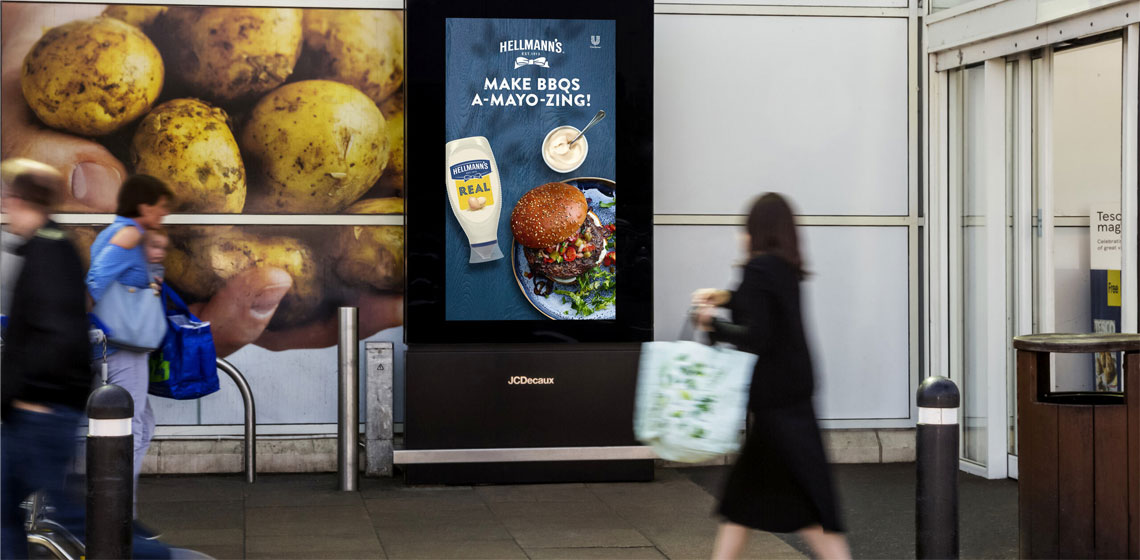- Tesco Resources
- Blog | Success beyond the sale: how to track the wider impact of your store media campaigns
Blog.
Success beyond the sale: how to track the wider impact of your store media campaigns
Measurement is one of the most important aspects of any retail media campaign. When it comes to physical channels like store media, it can also be one of the most difficult – unless, that is, you have the right evaluation capabilities in place.
The challenge of measuring in-store media is an issue we’ve already discussed in one of our recent posts. There, we looked at the benefits of a “test and control” approach, and how smarter planning can make it easier to gauge the true impact of your in-store activity. Essentially, by measuring sales in those stores where your media didn’t run (as well as those in which it did), it becomes much easier to see how well a campaign performed.

As explained in this post from my colleague Simon, though, retail media success isn’t something we can always judge via sales alone. That’s because – while commercial performance is normally the critical metric when it comes to lower-funnel activities like conversion and acquisition – it’s usually an ineffective way to gauge the value delivered by initiatives focused more on things like awareness and consideration.
For marketers that specialise at the upper end of the funnel, that presents a quandary. On the one hand, store media can be an incredible way to raise a brand’s profile, providing access to millions of grocery customers across myriad touchpoints. On the other hand, however, that raw focus on sales can make it difficult for brand marketing teams to measure the impact of their investments on the factors that matter most to them.
There are ways around that, of course. Sales data can be used to draw some conclusions about things like awareness and sentiment, although a lot of extrapolation and inference is needed to do so. Store traffic numbers can give an indication of reach, while focus groups and consumer panels can be employed too – though there’s no guarantee that participants will have been exposed to the campaign in question.
In short, what exists right now are imperfect solutions to an important problem. So, it’s with that thought in mind that we’re particularly excited about the launch of Connected Store Brand Lift, a new measurement service that promises to provide unprecedented insight into the performance of Connected Store campaigns.
Going beyond commercial performance.
If you’re not already aware, Connected Store is the umbrella term for the wide range of store media products available within the Tesco Media & Insight Platform. You can learn about everything included within our Connected Store offering here, but two of the key channels include in-store digital screens (Connected Display) and printed materials like banner dividers, shelf talkers, and recipe pads (Point-of-Sale).
Connected Store Brand Lift was designed from the ground up to help consumer packaged-goods companies (CPGs) measure the effectiveness of those channels beyond just sales and reach. Using the same test and control methodology mentioned above, it enables advertisers to discover how their store-based campaigns have influenced upper-funnel considerations like brand awareness and ad recall.
Connected Store Brand Uplift employs a survey-based approach to measurement, polling shoppers on a specific campaign. Importantly, responses to those surveys are drawn from customers signed up to Shopper Thoughts, our proprietary (and 90,000 person-strong) consumer panel. This ensures each of the surveys we run incorporates a fair split between people who have – and haven’t – been exposed to a campaign.
This is where the test and control element once again comes into play. By exploring the attitudes of both groups, we’re able to gauge a campaign’s impact on shopper perceptions with a lot more certainty. If “exposed” shoppers demonstrate greater recall and positive sentiment towards an advertiser than their “unexposed” peers, for instance, then that provides a very good indication that the campaign delivered what it was supposed to.
Naturally, the measurement capabilities of Connected Store Brand Uplift go much further than just a shopper’s ability to recollect seeing a certain piece of media. As well as unprompted and prompted awareness, some of the key survey questions asked as standard include:
- How likely or unlikely a shopper would be to buy that brand in the future.
- Whether they feel differently about the brand having seen the related ad.
- What they think the purpose of that ad is (in their own words).
- Whether there’s anything they particularly liked or disliked about it.
- The extent to which they found the creative unique, interesting, inspiring, or helpful.
Connected Store Brand Uplift surveys also give advertisers the opportunity to pose three bespoke questions, ensuring they can zero in on any specific issues they’d like to learn about. All questions are asked to both exposed and unexposed customers alike, ensuring the results returned provide an accurate reflection of performance.
A 360° view of success.
Once a Connected Store Brand Uplift survey has been completed, CPGs are presented with a comprehensive report that offers in-depth comparisons between the test and control groups. In turn, this provides answers to some of the biggest upper funnel questions, such as:
- What impact that activity had on shopper perceptions.
- How relevant and helpful customers found the creative.
- Whether the campaign had any influence on shoppers’ intent to purchase said brand.
In tandem with our existing sales measurement capabilities, this ensures CPGs can get a true 360° view of campaign performance – from sales uplift to awareness and beyond.
As a growing number of brands begin to combine and centralise their marketing budgets in pursuit of more connected and cohesive campaigns, that unified understanding will only become more important.

